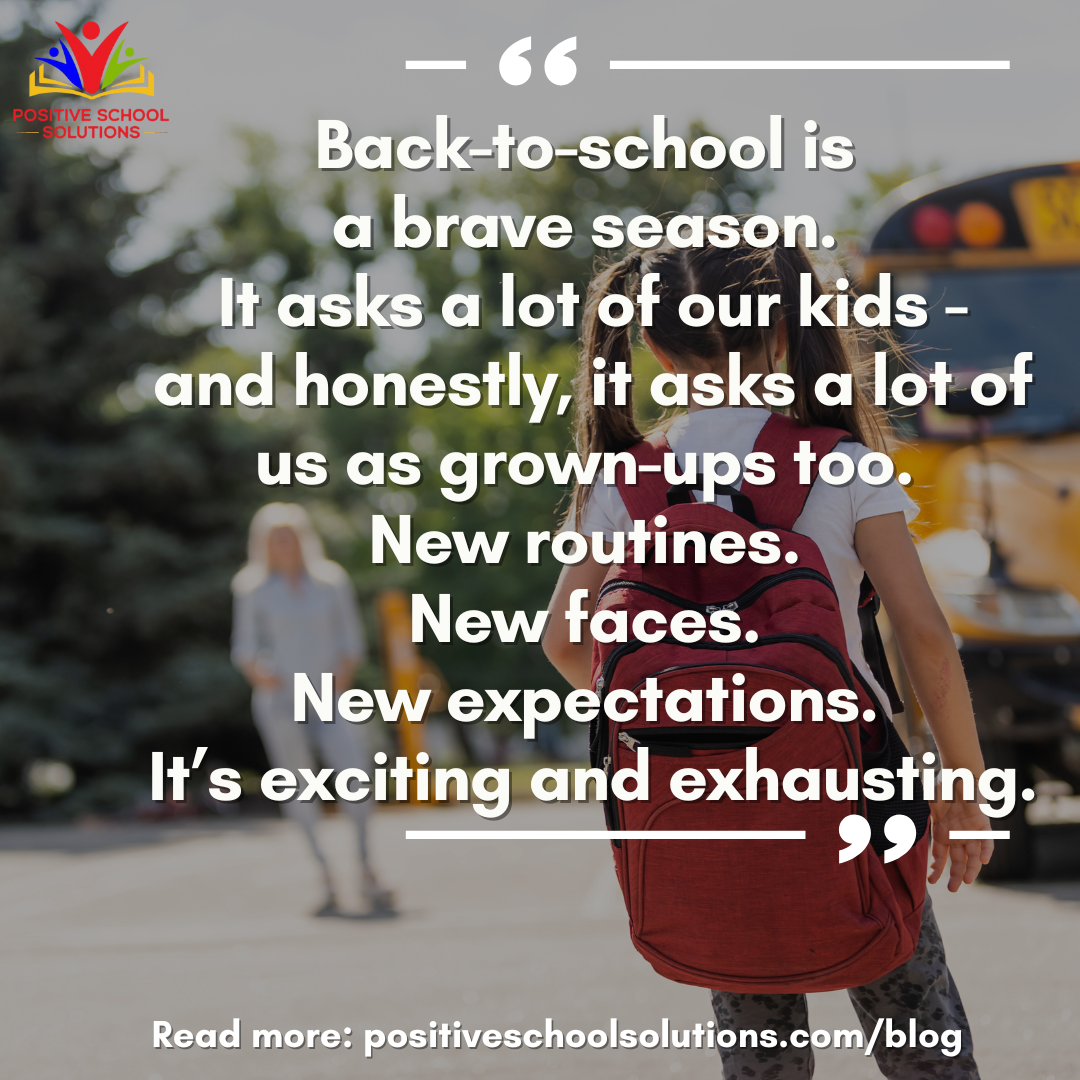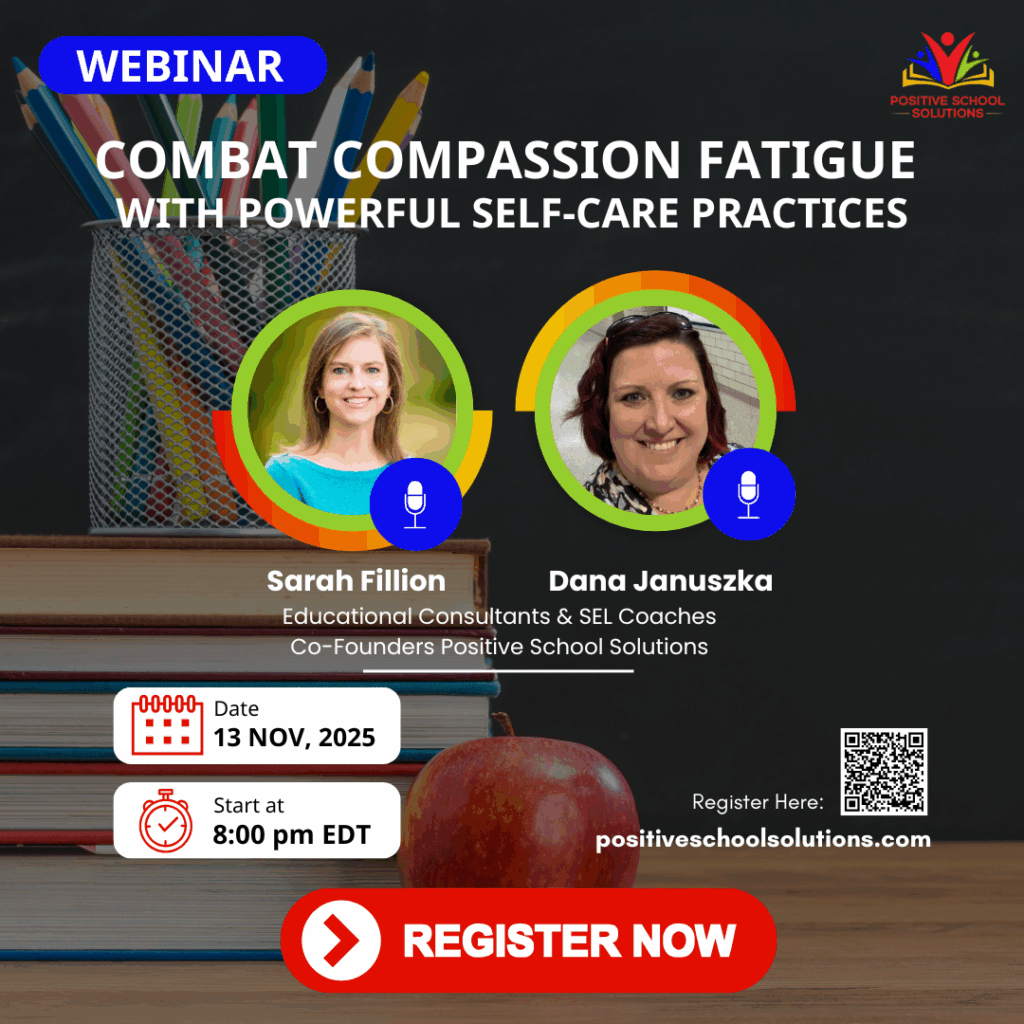Backpacks are packed. Lunchboxes are labeled. The calendar is full of color-coded optimism.
 And yet… the first few weeks of school can still bring out big feelings:
And yet… the first few weeks of school can still bring out big feelings:
“I don’t want to go.”
“I hate homework.”
“I don’t have any friends.”
If you’ve ever heard those words at your kitchen table, you’re not alone.
Back-to-school is a brave season. It asks a lot of our kids—and honestly, it asks a lot of us as grown-ups too. New routines. New faces. New expectations. It’s exciting and exhausting. But here’s the good news: the small things you do at home can make a big impact on how your child starts the year—and how they feel about school for the long haul.
Here are a few ways families can ease the transition, build confidence, and celebrate the moments that matter most.
Start the Day Like a Team
Before the bell ever rings, the tone of the day is already being set. Morning routines that are calm, predictable, and connected help children enter school feeling safe and ready. That doesn’t mean every moment is magical—it just means they know what to expect and feel supported through it.
Try this:
- Create a visual checklist together for mornings (even older students benefit from this – and you can have them make it!)
- Build in a “connection moment” before the day begins—like a walk to the bus stop, a silly handshake, or a compliment.
- End with something powerful like: “Be brave today. You’ve got this.”
When the Complaints Come
It’s normal for kids to voice their discomfort during transitions. “I don’t want to go” or “I don’t like school” doesn’t always mean there’s a big problem—it often means they’re processing change.
Instead of jumping to fix it or telling them “you’ll be fine,” try:
- Reflecting the feeling: “It sounds like today feels hard.”
- Offering a choice: “Do you want a quiet morning ride or a pump-up playlist?”
- Naming their strength: “You’ve done hard things before. You’re good at finding your way.”
Homework Without the Battles
The after-school slump is real. Energy is low, patience is lower, and suddenly, math homework feels like climbing Everest.
One of the biggest challenges? Phones.
As of this year, 33 states have laws or policies around student cell phone use in K–12 schools—26 of them have implemented bans or limits in the classroom. Why? Because even with the best intentions, phones derail focus. Fast.
At home, the same holds true. Once students have their phones back, it can feel nearly impossible to switch into homework mode. It’s not about punishment—it’s about protecting focus.
Here’s how you can help:
- Set clear expectations: “You’ll have your phone back when homework is done—and then you’re free to relax.”
- Create a phone-free workspace (yes, even for older students).
- Sit nearby during homework time, even if you’re doing your own task, also phone-free, to model focus and be available for quick check-ins.
- Celebrate effort and persistence instead of speed or perfection.
When adults set boundaries with care, students get their work done faster, with less stress—and still have time to unwind. It’s not about taking away freedom—it’s about helping them manage it.
Praise That Builds Grit
It’s tempting to say “You’re so smart!” when your child gets a good grade or “You’re so nice!” when they make a new friend. But research shows that specific, effort-based praise is far more effective in helping kids grow.
Try this instead:
- “I saw how nervous you were to go to practice, but you pushed through. That’s courage.”
- “It was kind of you to include that new student. You made someone feel like they belong.”
- “You worked hard to finish that even when it got tricky. That’s how learning happens.”
When we name what our kids are doing well and how it helps them grow, they begin to see themselves as resilient, capable, and proud.
You’re Not Alone
Teachers are working hard to build strong relationships, safe routines, and welcoming classrooms. And when schools and families work together, that support multiplies.
You don’t have to have all the answers. You just have to stay connected—to your child, to their teachers, and to the moments of growth that happen every day, even when it’s hard to see them.
When we meet our kids with support, belief, and a whole lot of back-to-school bravery, those early days of “I don’t want to go” will quickly turn into “Guess what I did today!”
Looking for more back-to-school resources and routines?
We’ve got quick tips for every grade band, plus conversation starters that actually get kids talking.
Check out our free back-to-school tools for families or follow us @PositiveSchoolSolutions.
Written by Sarah FIllion 2025

